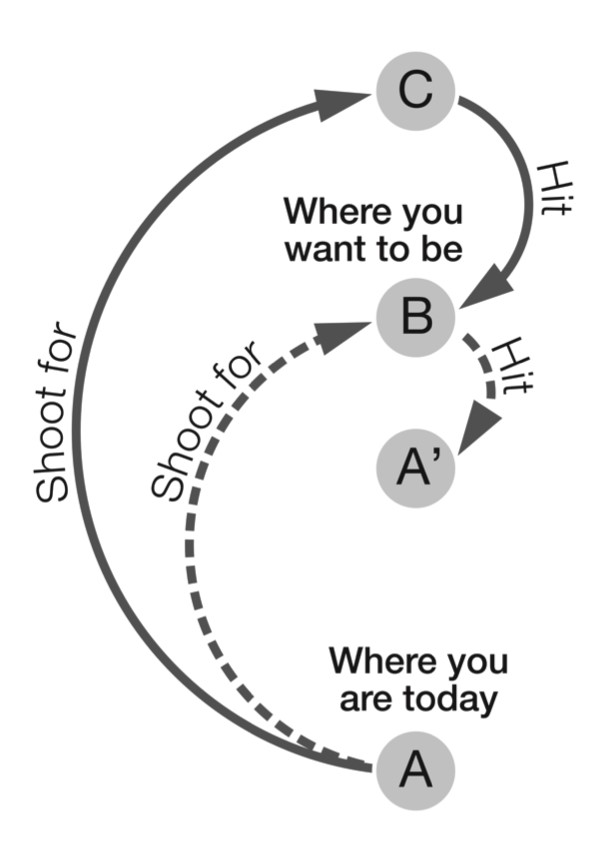Jun 21, 2016
Three Activities to Inspire Innovation at Any Company
Companies are becoming irrelevant faster than ever. Why? The pace of change outside of organizations is moving faster than the pace of change within. The antidote to this rapid obsolescence is innovation.
I define innovation as an end-to-end process that incorporates four basic steps. These are represented through my FAST model. F = Focus (innovate where you differentiate), A = Ask (identify better questions as a means of finding better solutions), S = Shift (because expertise is the enemy of innovation, look elsewhere for solutions), and T = Test (don’t fail; experiment).
To help develop the “Ask” and “Shift” components of this model, participate in three quick activities with your team. These will transform your perspective and help you find potentially better solutions.
Predict What the Competition Will Do Next
When innovating, companies often focus their attention on their current products and services. Similarly, they tend to look for solutions to today’s problems, such as responding reactively to a competitor’s move. While these approaches may lead to bigger, faster, and cheaper versions of what you have today, they may also prevent you from seeing bigger, longer-term shifts in your industry – ultimately blindsiding you.
Invariably, a more proactive approach is to determine what the marketplace and your competitors will do in the future.
Think about it. When is the last time you asked the following questions?
- What are we most afraid our competition will do to us?
- Who is not a competitor now, but might be in the future?
- What shift might happen in the buying habits of our customers that may make our product/service less appealing?
- How can the sagging economy help our business?
- What emerging products or services may make our business irrelevant?
The list of questions like this can be endless – and valuable.
So next time, with your team:
- Brainstorm your own list of questions, building upon mine.
- Ask your group each question one at a time. Have individuals first write down their answers before sharing with others.
- For those that are deemed plausible, create a list of “triggers” for each. That is, what are the market conditions that will indicate that the given scenario is moving from “possible” to “plausible?” For example, UPS is concerned about the impact of 3D printing on the supply chain. What will they need to see in the market to know that the threat is real?
- Incorporate an outward focus on a regular basis by setting up a corporate “radar” system to help monitor external conditions. Have everything in place such that you can implement critical solutions when market conditions dictate.
This approach blends creativity with scenario-based planning. It helps you move from reactive to proactive solutions. And in today’s volatile world, this might just be the key to your long-term survival.
Make the Impossible, Possible?
Magicians are master innovators. They make the impossible possible. They conjure up crazy ideas like slicing a woman in half and then find ways to accomplish it without killing their subjects.
It is time to innovate like a magician.
 In business, we are always looking to go from point A (where we are today) to point B (where we want to go). To do so, we are trained to find the most logical, rational and efficient route to get there. But what if, instead, we ask ourselves, “What are impossible or impractical solutions?” (point C). This question will challenge you to think way beyond what you naturally think is possible generating creative solutions that will likely trump other like-minded businesses. From there, you can determine how to make these solutions implementable.
In business, we are always looking to go from point A (where we are today) to point B (where we want to go). To do so, we are trained to find the most logical, rational and efficient route to get there. But what if, instead, we ask ourselves, “What are impossible or impractical solutions?” (point C). This question will challenge you to think way beyond what you naturally think is possible generating creative solutions that will likely trump other like-minded businesses. From there, you can determine how to make these solutions implementable.
Take 3D printing
as an example. Today, it can take days for retailers to ship products from their warehouses (A). In the future, they may aspire to dramatically reduce fulfillment time to hours or even minutes (B). One seemingly impossible solution is to email physical products (C). While at one time this solution would have seemed completely illogical, it is rapidly becoming a reality today. It is this kind of thinking that generates the next generation of products and services.
How to innovate like a magician:
- Get into groups of 3 or 4.
- Choose one person to be the Everyone else will be a Seeker.
- Seekers: Identify a challenge you want solved. (1 minute)
- Solver: Generate and share an impossible solution; one that defies the laws of physics, is illegal and/or is immoral. (1 minute)
- Seekers: Identify 3 attributes you like about the solution. (1 minute)
- Seekers: Add 3 ideas that would make the solution even better/more practical (we are moving from point C to point B). (1 minute)
- Everyone: Use the attributes identified in steps 5 and 6 to refine and improve the original solution so that it is possible, legal and moral. (1 minute)
Instead of just going for what seems practical, shoot for the seemingly impossible…and make it possible.
Find Someone Else Who Has Already Solved Your Problem
Imagine you wanted to develop a toothpaste that would whiten teeth without using the traditional methods of bleach or abrasives. One way to find a new method is to ask, “Who else has solved a problem similar to this?” In this case, you might ask, “Who makes whites whiter without bleach?” The obvious answer is laundry detergent. As it turns out, most detergents use a bluing agent to make whites appear whiter by masking the yellow. Armed with this information, a team of dental experts created a whitening toothpaste that contains a blue dye and creates the immediate illusion of white teeth.
When trying to find a solution to a complex problem, stop relying solely on your teams own, incestuous knowledge and look to gain solutions from other industries, processes, products, or discipline.
To do so, consider the following:
- What is the problem you want to solve? (e.g., How do we make teeth whiter without abrasives or bleaches?)
- What is a more “abstract” way to frame the problem? (e.g., How do we make something that is already white even whiter?)
- Who else addresses a similar problem? (e.g., laundry detergents that use bluing agents)
- How could you adapt their solution to your problem? (e.g., create a toothpaste with a blue die in the middle)
How has this concept been used elsewhere in the world?
A gas pipeline company developed a new technology for finding and sealing pipeline cracks by mirroring the clotting agents in the human body.
A boat rental company uses a Netflix-like subscription model. Netflix allows you to receive an unlimited number of DVDs each month, but you can only have (depending on your subscription level) two in your possession at any given time. The boat company gives members unlimited access to a number of boats with two open reservation slots at any given time. As soon as you use one reservation, you get another.
Solutions can come from anywhere. What was once thought to be impossible, may now be probable. So, while your competition is looking inward to solve their problems, outpace them by extending your view beyond your company’s four walls. And if that’s not enough, pop on your top hat and wave your magic wand as you begin to innovate more like a magician.
The preceding activities are condensed versions of activities that appear in Stephen Shapiro’s book, “Best Practices Are Stupid: 40 Ways to Out-Innovate the Competition.”
About the Author: Stephen Shapiro is the Innovation Instigator. After a 15-year tenure leading a 20,000-person innovation practice at Accenture, in 2001 he launched his professional speaking career. He has presented his counter intuitive perspectives on innovation to audiences in 50 countries. His latest book, “Best Practices Are Stupid,” was named the best innovation book of 2011. In 2015 he was inducted into the Speaker Hall of Fame. For information on bringing an innovation speaker or innovation workshop to your next event, contact BigSpeak at (805) 965-1400 or info@bigspeak.com.
Speaker
Tags

 Stephen Shapiro
Stephen Shapiro